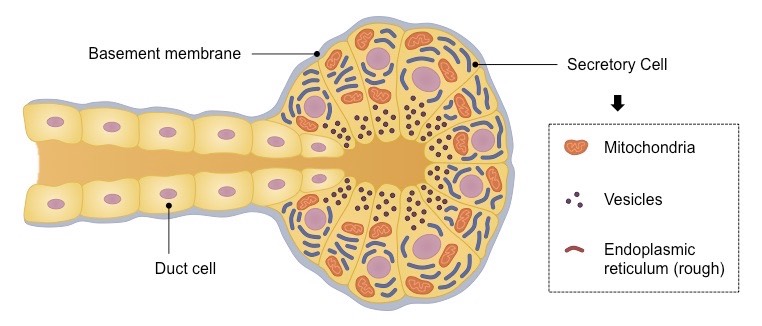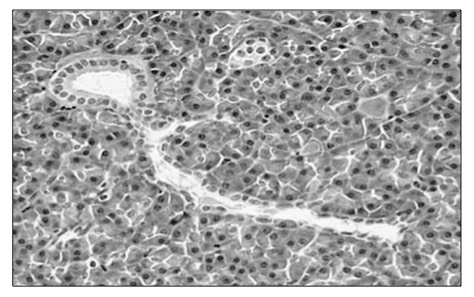![]()
Understanding:
• Exocrine glands secrete to the surface of the body or the lumen of the gut
Exocrine glands produce and secrete substances via a duct onto an epithelial surface – either:
- The surface of the body (e.g. sweat glands, sebaceous glands)
- The lumen of the digestive tract / gut (e.g. digestive glands)
Examples of digestive glands include:
- Salivary glands – secrete saliva which contains amylase (breaks down starch)
- Gastric glands – secretes gastric juices which includes hydrochloric acid and proteases (breaks down protein)
- Pancreatic glands – secretes pancreatic juices which include lipase, protease and amylase
- Intestinal glands – secretes intestinal juices via crypts of Lieberkuhn in the intestinal wall
![]()
Skill:
• Identification of exocrine gland cells that secrete digestive juices from electron micrographs
Exocrine glands are composed of a cluster of secretory cells which collectively form an acinus (plural = acini)
- The acini are surrounded by a basement membrane and are held together by tight junctions between secretory cells
- The secretory cells possess a highly developed ER and golgi network for material secretion and are rich in mitochondria
Exocrine products are released (via secretory vesicles) into a duct, which connects to an epithelial surface
- These ducts may arise from a convergence of smaller ductules (each connected to an acinus) in order to enhance secretion
Structure of a Typical Exocrine Gland


⇒ Click on the image to contrast gland features – acinus (red) and duct (yellow)
Electron Micrograph of an Exocrine Gland

